
The Enchanting Valley of Swat: Pakistan's Hidden Gem
Discover Swat Valley, Pakistan's hidden gem, where stunning landscapes, rich history, and warm hospitality come together for an unforgettable travel experience.
Swat, known as the 'Switzerland of the East,' is a stunning valley located in the Khyber Pakhtunkhwa province of Pakistan. The valley is famous for its breathtaking landscapes, lush green fields, and crystal-clear rivers. The Swat River runs through the valley, adding to the serene beauty of the area. The valley is also rich in history, with ancient Buddhist stupas and monasteries dotting the landscape. Swat is an ideal destination for nature lovers and adventure seekers. The valley offers numerous trekking and hiking opportunities, with trails leading to picturesque lakes and glaciers. Malam Jabba, a popular ski resort in Swat, attracts visitors from all over the country during the winter months. For those interested in history and culture, the Swat Museum in Saidu Sharif showcases a fascinating collection of Gandhara art and artifacts. The local hospitality in Swat is unmatched, with friendly and welcoming residents eager to share their culture and traditions with visitors. Traditional Pashtun cuisine, featuring dishes like Chapli Kebabs and Lamb Karahi, is a must-try when visiting the valley. Whether you are exploring the ancient ruins or simply soaking in the natural beauty, Swat promises an unforgettable experience for every traveler.
Local tips in Swat
- Best Time to Visit: The ideal time to visit Swat is from April to October when the weather is pleasant and the valley is in full bloom.
- Local Transport: Opt for local jeeps or hire a private car to explore the valley, as public transport options may be limited.
- Cultural Respect: Dress modestly and respect local customs, especially when visiting religious sites.
- Safety First: Always check the latest travel advisories and be aware of your surroundings, as the area has had security issues in the past.
- Cash on Hand: Keep cash with you, as ATMs may not be available in remote areas.
The Enchanting Valley of Swat: Pakistan's Hidden Gem
Swat, known as the 'Switzerland of the East,' is a stunning valley located in the Khyber Pakhtunkhwa province of Pakistan. The valley is famous for its breathtaking landscapes, lush green fields, and crystal-clear rivers. The Swat River runs through the valley, adding to the serene beauty of the area. The valley is also rich in history, with ancient Buddhist stupas and monasteries dotting the landscape. Swat is an ideal destination for nature lovers and adventure seekers. The valley offers numerous trekking and hiking opportunities, with trails leading to picturesque lakes and glaciers. Malam Jabba, a popular ski resort in Swat, attracts visitors from all over the country during the winter months. For those interested in history and culture, the Swat Museum in Saidu Sharif showcases a fascinating collection of Gandhara art and artifacts. The local hospitality in Swat is unmatched, with friendly and welcoming residents eager to share their culture and traditions with visitors. Traditional Pashtun cuisine, featuring dishes like Chapli Kebabs and Lamb Karahi, is a must-try when visiting the valley. Whether you are exploring the ancient ruins or simply soaking in the natural beauty, Swat promises an unforgettable experience for every traveler.
When is the best time to go to Swat?
Iconic landmarks you can’t miss
Malam Jabba Ski Resort by Samsons Group
Discover the thrill of skiing and the serene beauty of Malam Jabba Ski Resort in the stunning Swat Valley, Pakistan.
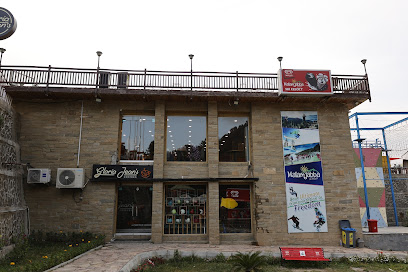
Fiza Gat Park
Explore the natural beauty of Fiza Gat Park, a tranquil oasis in Mingora, Swat Valley, where nature meets serenity.

Marghazar White Palace
Discover the enchanting Marghazar White Palace in Swat, a historical marvel offering stunning architecture and breathtaking natural beauty.
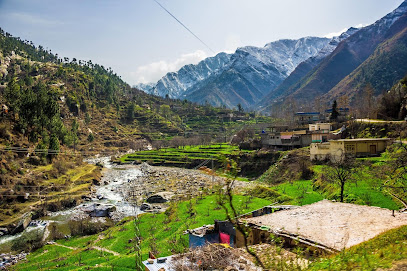
Mahodand Lake
Explore the breathtaking Mahodand Lake in Swat Valley, a serene escape surrounded by majestic mountains and vibrant nature, perfect for adventure and relaxation.
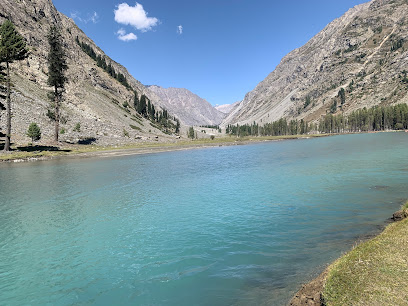
Fizagat
Experience the breathtaking natural beauty of Fizagat in Swat Valley, a tranquil haven perfect for relaxation and adventure.
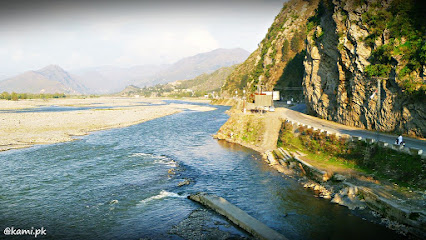
Swat Museum
Explore the Swat Museum, a gateway to the ancient wonders and rich heritage of Swat Valley, Pakistan.
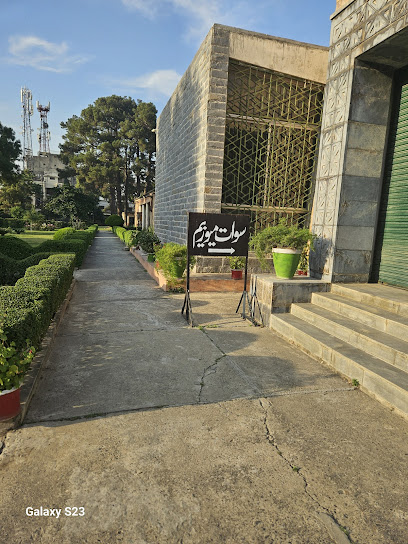
Madyan Bridge
Explore the beauty of Madyan Bridge, a stunning architectural gem connecting you to nature's wonders in Swat, Pakistan.

Jarogo Waterfall Swat Valley | Visit Malam Jabba, Kalam Valley, Kumrat Valley | Swat Travel Guide
Experience the breathtaking beauty of Jarogo Waterfall, a hidden gem in Swat Valley, perfect for adventure seekers and nature lovers.

Sarfaraz khan
Discover the historical richness and natural beauty of Sarfaraz Khan, a captivating tourist attraction in Swat, Pakistan, perfect for explorers and history enthusiasts.
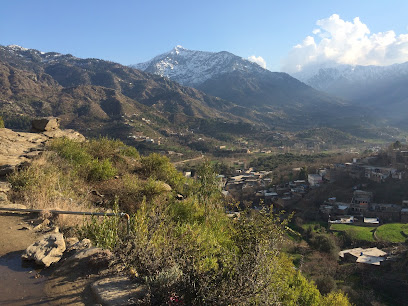
Butkara I
Discover the ancient ruins of Butkara I in Swat Valley, a serene archaeological site that unveils the rich historical tapestry of Pakistan's past.
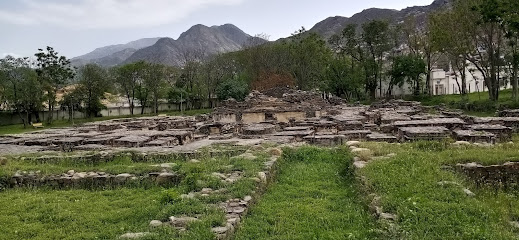
Ladies Park, Kanju Township
Experience the serene beauty of Ladies Park in Kanju Township, a tranquil retreat perfect for families seeking relaxation and outdoor enjoyment.

Ushu Forest
Discover the breathtaking beauty of Ushu Forest, a national forest in Kalam Valley, where nature's tranquility awaits every traveler.
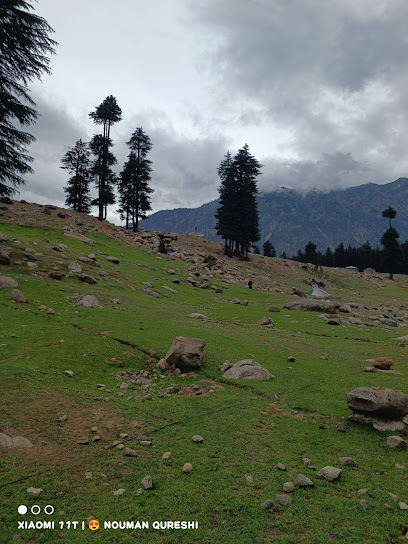
Kalam Glacier
Discover the breathtaking beauty and adventure of Kalam Glacier in the heart of Swat Valley, Pakistan's hidden gem.
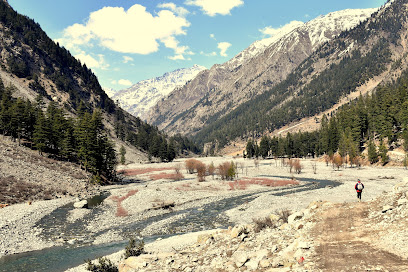
Jaaz Banda
Experience the serene beauty and adventure of Jaaz Banda in Kumrat Valley, a must-visit destination for nature lovers and thrill-seekers in Pakistan.

Badgoi Pass
Experience the breathtaking beauty and rich culture of Badgoi Pass in Swat, Khyber Pakhtunkhwa—a must-visit destination for nature lovers and food enthusiasts.
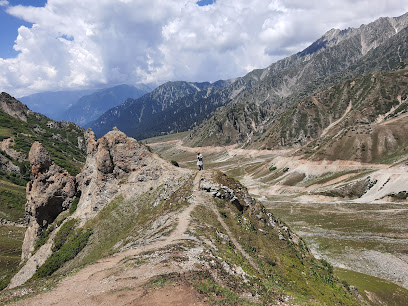
Unmissable attractions to see
Fiza Gat Park
Experience the serene beauty of Fiza Gat Park, a tranquil oasis in Mingora that showcases the stunning landscapes of Swat Valley.
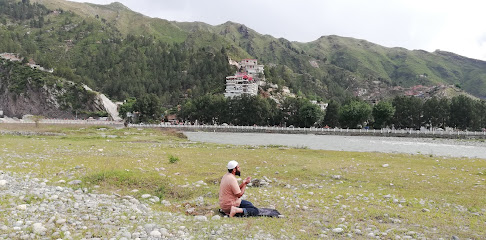
Usho Forest (Plain Forest)
Explore the enchanting Usho Forest in Kalam, Swat, a national treasure of lush greenery and serene landscapes perfect for nature lovers.
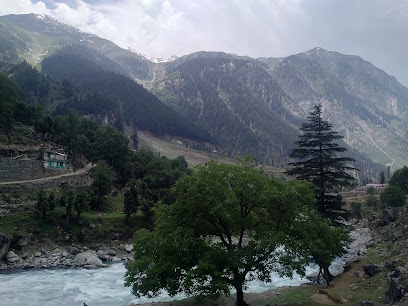
Marghazar White Palace
Explore the historical grandeur of Marghazar White Palace in Swat Valley, a stunning blend of royal heritage and natural beauty.

Fizagat
Discover the breathtaking beauty of Fizagat, a serene tourist attraction in Swat, Khyber Pakhtunkhwa, perfect for nature lovers.
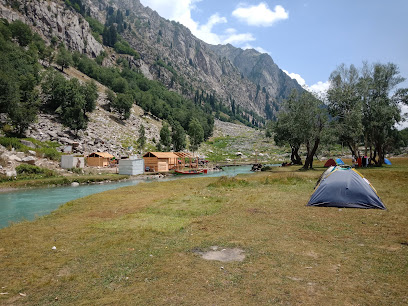
Wonder World Amusement Park
Discover thrilling rides and unforgettable memories at Wonder World Amusement Park, a top destination for families and adventure enthusiasts in Swat, Pakistan.
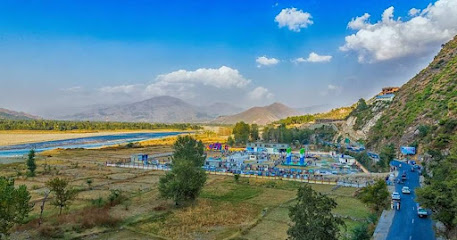
Swat Museum
Explore the Swat Museum - a gateway to the rich history and cultural heritage of the Swat Valley, showcasing ancient artifacts and art.
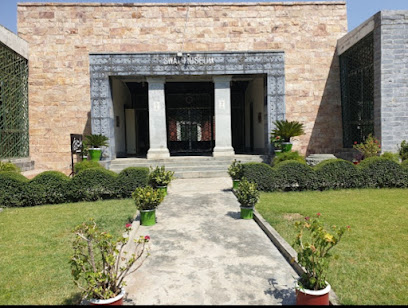
Jarogo Waterfall Swat Valley | Visit Malam Jabba, Kalam Valley, Kumrat Valley | Swat Travel Guide
Explore the breathtaking Jarogo Waterfall in Swat Valley, a natural wonder surrounded by lush landscapes and serene hiking trails.

Butkara I
Explore Butkara I, an ancient Buddhist stupa in Swat, Pakistan, and immerse yourself in its rich historical and cultural legacy amidst stunning landscapes.
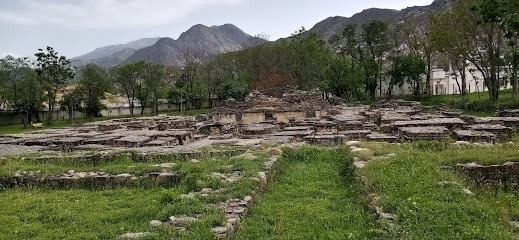
Ushu Forest
Explore the serene beauty of Ushu Forest in Swat Valley, a national forest rich in biodiversity and stunning landscapes, perfect for nature lovers.

Shahi Bagh
Explore the enchanting beauty of Shahi Bagh in Kalam Valley, a natural paradise filled with lush meadows and stunning mountain vistas.

Badgoi Pass
Experience the breathtaking views and rich culture at Badgoi Pass, a must-visit attraction nestled between Kumrat and Swat valleys in Pakistan.
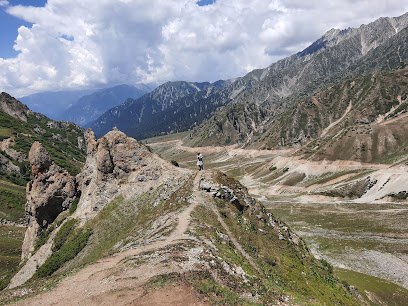
Saifullah Lake
Experience the breathtaking beauty of Saifullah Lake, a serene escape nestled in the heart of Swat Valley, Pakistan, perfect for nature lovers and adventurers.
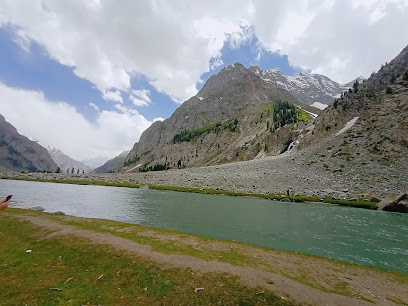
Miandam
Explore the serene beauty of Miandam, a hidden gem in Swat Valley, perfect for nature lovers and cultural enthusiasts seeking tranquility.
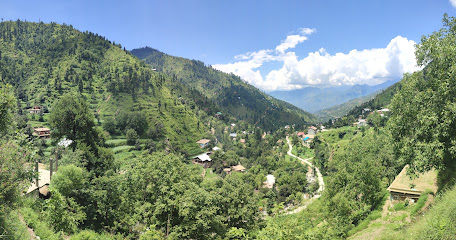
Dhamaka Lake
Discover the serene beauty of Dhamaka Lake in Swat Valley, a tranquil oasis surrounded by majestic mountains and lush landscapes.
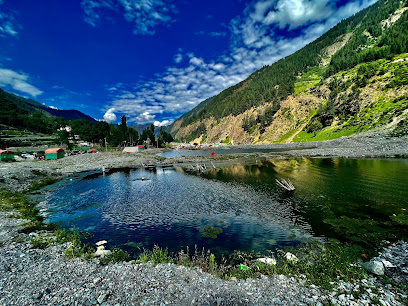
Balasoor Top
Explore the breathtaking views and tranquility of Balasoor Top in Swat Valley, Pakistan – a hidden gem for nature lovers and adventurers.
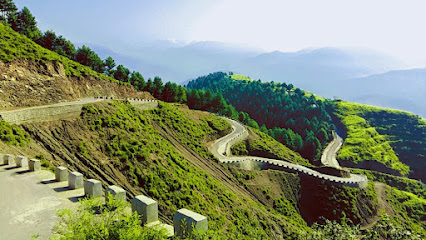
Essential places to dine
Relax Food Point
Discover authentic Pakistani flavors at Relax Food Point in Mingora – a culinary gem amidst Swat's breathtaking scenery.
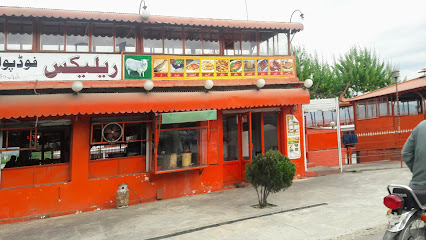
Hujra Restaurant
Experience the rich flavors of authentic Pakistani cuisine at Hujra Restaurant in Mingora - where every meal tells a story.
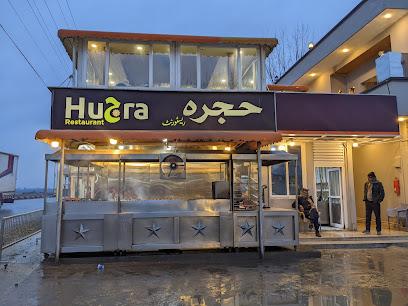
G Qurban Restaurant
Experience the essence of Pakistani culinary traditions at G Qurban Restaurant in Mingora - where every dish tells a story.
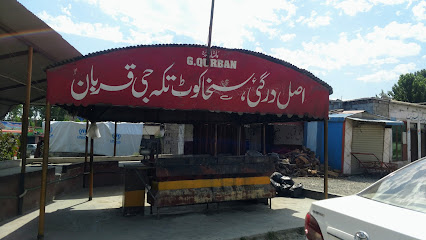
Arif Sardaryab Restaurant Hazara
Experience authentic Hazara cuisine at Arif Sardaryab Restaurant in scenic Swat – where tradition meets taste!
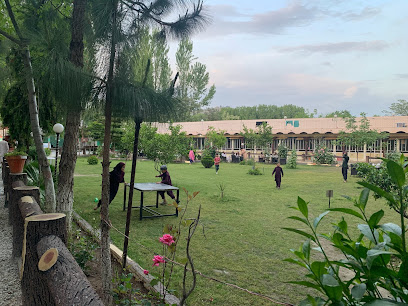
It's Eatoo
Discover delightful flavors at It's Eatoo, Saidu Sharif's premier dining destination offering everything from pastries to refreshing drinks.
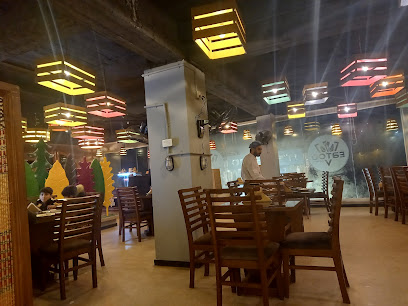
Swat Takht bhai kebab center since 1976
Discover the best kebabs in Swat at Takht Bhai Kebab Center, a traditional restaurant serving delicious dishes since 1976.

Food Bank Swat
Experience authentic Pakistani cuisine at Food Bank Swat - a culinary delight nestled in the scenic beauty of Khyber Pakhtunkhwa.
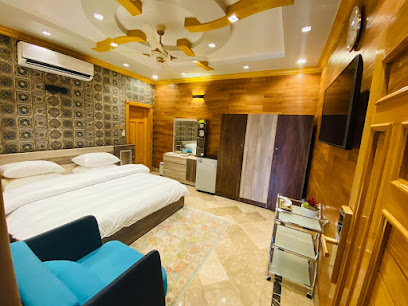
DEWAN-E-HAREEM
Experience authentic Pakistani cuisine at Dewan-e-Hareem in Swat - where tradition meets taste in a stunning setting.
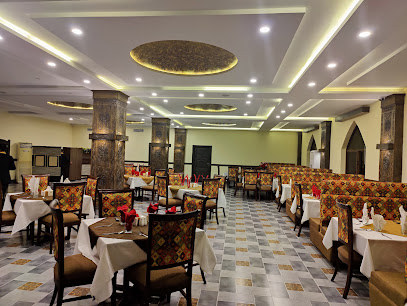
Swat Munal Restaurant And Park
Experience authentic flavors in a breathtaking natural setting at Swat Munal Restaurant And Park.

Hotspot Restaurant Swat
Discover delicious fast food at Hotspot Restaurant in Saidu Sharif, where every meal is made with care and local flavors shine.
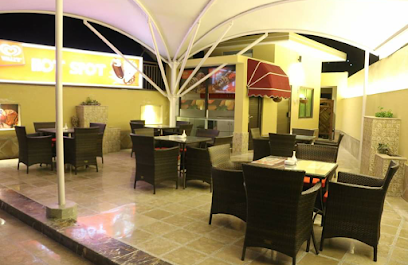
Green Hills Restaurant
Discover authentic Pakistani cuisine at Green Hills Restaurant in Kanju, where stunning views meet delicious flavors in Swat.
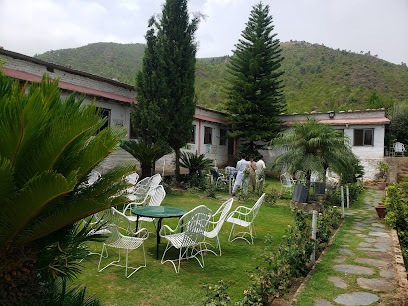
Swat
Experience the authentic flavors of Swat at this charming restaurant nestled in the heart of Kalakot.
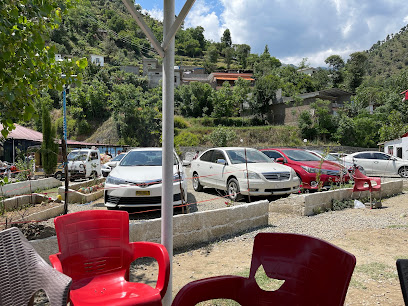
MS Restaurant
Experience authentic Pakistani cuisine at MS Restaurant in Sangota, where every meal tells a story of local flavor and hospitality.
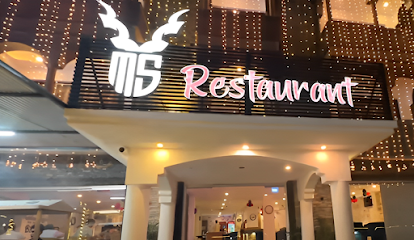
Swat Road Side Hotel And Restaurant
Experience authentic Pakistani cuisine amidst stunning views in Swat Valley at Swat Road Side Hotel and Restaurant.

B Biryani restaurant
Experience authentic flavors at B Biryani Restaurant in Mingora – where every bite tells a story of tradition and taste.

Markets, malls and hidden boutiques
Zone Mingora Bazar
Explore Mingora's vibrant Zone Mingora Bazar, where local culture, fresh produce, and unique crafts come together in a bustling market atmosphere.
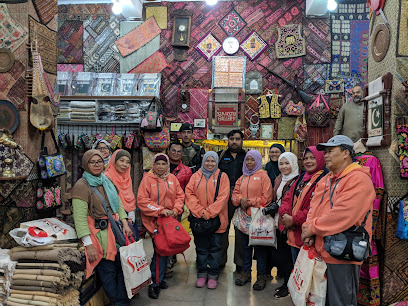
Chena Market
Explore the vibrant Chena Market in Mingora, Swat, for stylish shopping, local crafts, and delicious street food in a lively atmosphere.

Swat Shopping Mall
Discover a vibrant shopping experience at Swat Shopping Mall in Mingora, where local culture meets modern retail in a stunning environment.
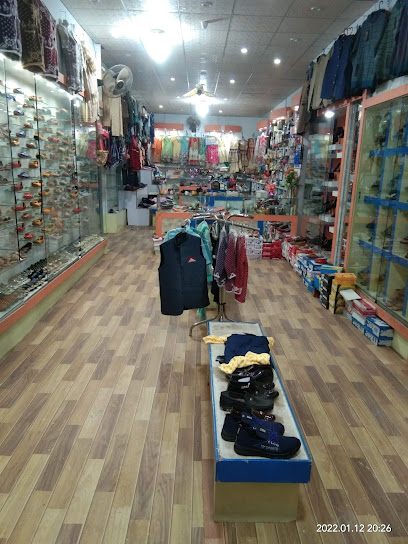
D WATSON BALOGRAM SWAT
Discover the vibrant charm of D Watson Balogram in Swat, where local culture meets quality shopping in a picturesque setting.
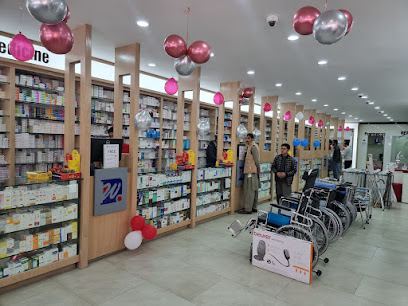
Swat Store
Explore Swat Store for unique handicrafts, textiles, and local treasures in Mingora, a cultural haven in Khyber Pakhtunkhwa, Pakistan.
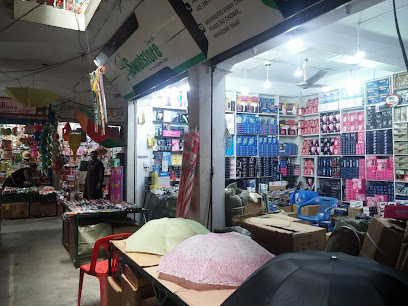
MALL OF SWAT
Experience the blend of modern shopping and local culture at the Mall of Swat, a vibrant destination in Khyber Pakhtunkhwa.
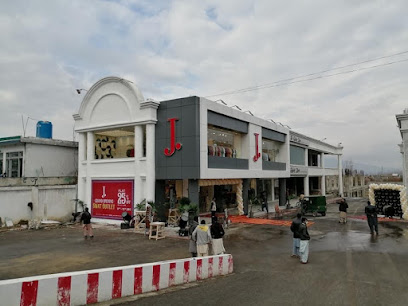
Swat Market
Experience the essence of Swat Valley at Swat Market, where vibrant culture, local crafts, and authentic flavors come together.
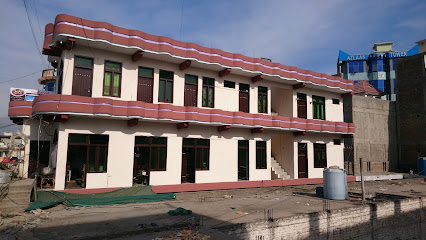
edenrobe
Discover fashion at Edenrobe, the premier clothing store in Swat, Pakistan, offering a blend of modern style and traditional elegance.
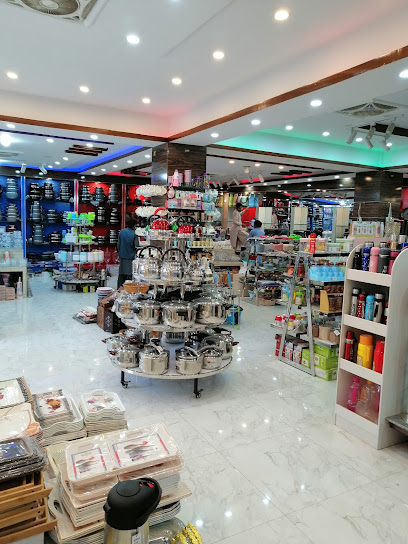
Swat Mall
Discover the heart of shopping and culture at Swat Mall - a vibrant hub in Mingora, Pakistan, blending local charm with modern retail.
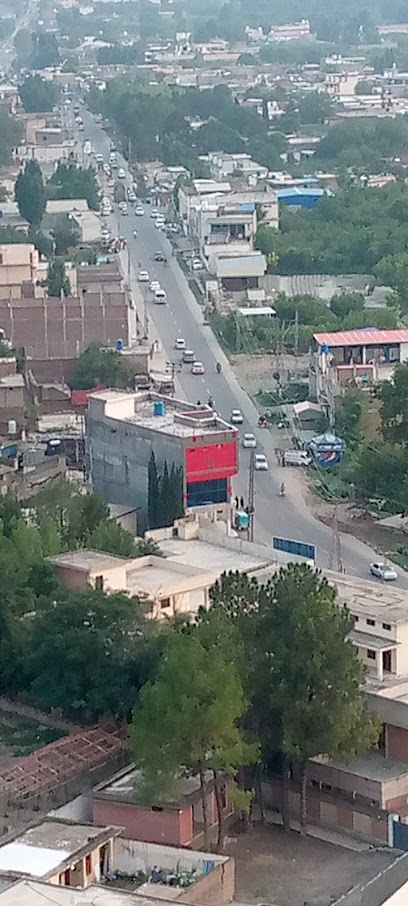
Minnie Minors
Discover the vibrant fashion of Swat at Minnie Minors, where traditional meets modern in a delightful shopping experience.
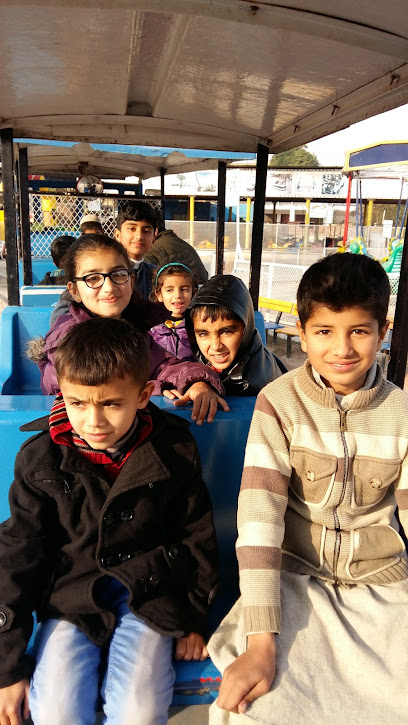
Swat Valley Super Store
Discover local flavors and crafts at the Swat Valley Super Store, a vibrant grocery haven in the heart of Pakistan's beautiful Swat Valley.
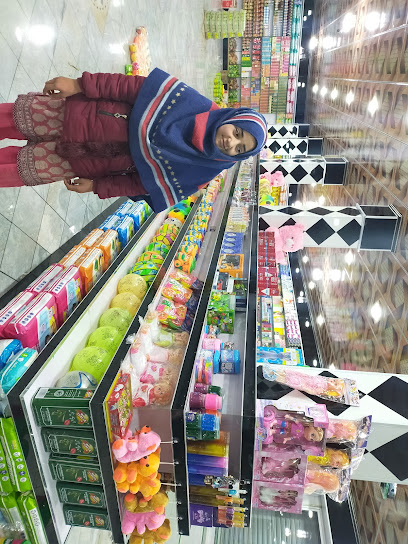
HAQ CASH & CARRY
Discover the essence of Swat at HAQ CASH & CARRY, your go-to general store for local products and essentials in Khyber Pakhtunkhwa.
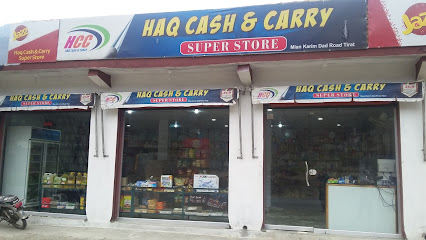
Ideas - Swat
Discover the perfect blend of modern style and traditional elegance at Ideas - Swat, your go-to clothing store in the heart of the beautiful Swat Valley.
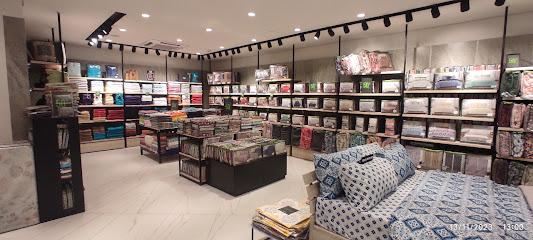
Sapphire Swat
Explore the best of Pakistani fashion at Sapphire Swat, where style meets tradition in a delightful shopping experience.
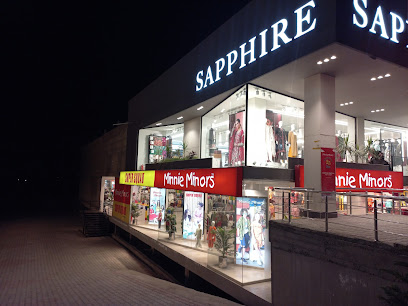
Al Salam Shopping Mall
Explore Al Salam Shopping Mall, a vibrant shopping destination in Swat offering diverse retail options, dining experiences, and entertainment for all.

Essential bars & hidden hideouts
Relax Food Point
Discover the essence of Pakistani cuisine at Relax Food Point in Mingora, a must-visit dining destination in the stunning Swat Valley.
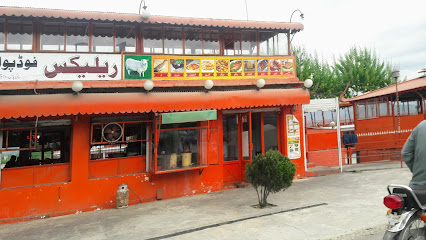
Hujra Restaurant
Explore the authentic taste of Pakistani cuisine at Hujra Restaurant, a top dining destination in Mingora, Swat, offering a rich menu in a welcoming atmosphere.
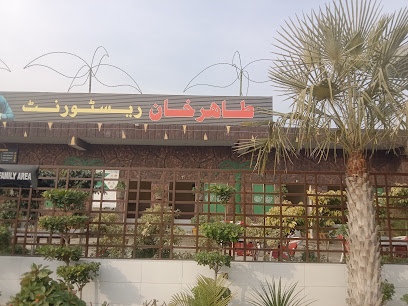
The Vintage Home
Discover the flavors of Swat at The Vintage Home, where authentic Pakistani cuisine meets a charming atmosphere in the heart of the valley.
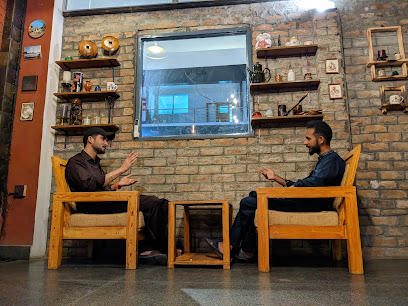
It's Eatoo
Discover It's Eatoo, a vibrant restaurant-bar in Swat offering delectable pastries, fast food, and refreshing drinks in a cozy atmosphere.
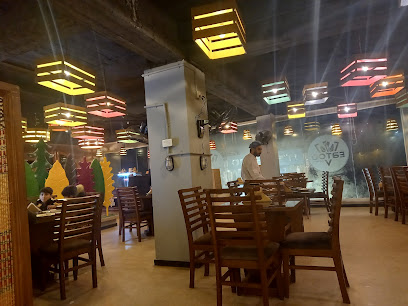
DEWAN-E-HAREEM
Discover the rich flavors of Pakistani cuisine at Dewan-e-Hareem, a must-visit restaurant in Kanju, Swat, offering an unforgettable dining experience.
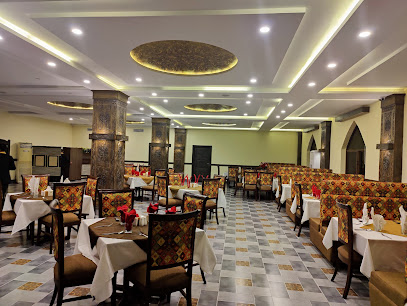
Green Hills Restaurant
Discover Green Hills Restaurant, a culinary treasure in Swat offering affordable local and international dishes amidst stunning landscapes.

Pak Desi foods and Cottages.
Experience authentic Pakistani cuisine and serene cottage stays at Pak Desi Foods and Cottages, your perfect retreat in the heart of Swat Valley.
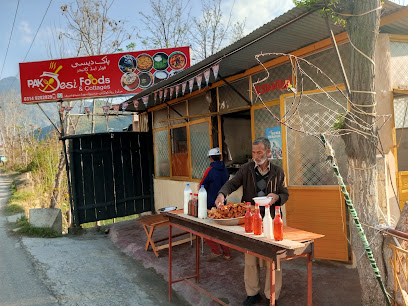
Bar B.Q. Tonight
Discover the flavors of authentic Pakistani barbecue at Bar B.Q. Tonight in the heart of Swat Valley.
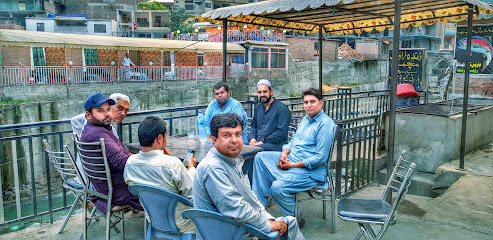
Cafe Akbari Swat
Experience the authentic flavors of Swat at Cafe Akbari, where local cuisine meets stunning natural beauty.

Swat INN Broast And Pizza Hut
Discover the taste of Khyber Pakhtunkhwa at Swat INN Broast And Pizza Hut, where quality meets local flavor in a stunning setting.
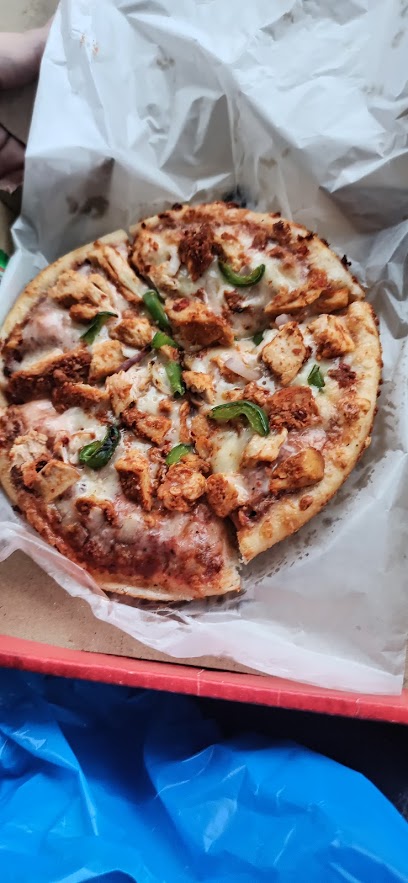
Karachi bar bq restaurant bahrain swat
Experience the rich flavors of authentic barbecue at Karachi Bar BQ Restaurant in Bahrain, Swat – a culinary journey through Pakistani cuisine.
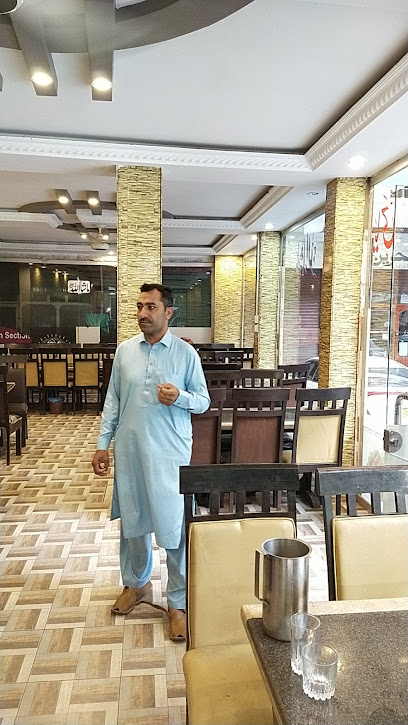
Aroma open air restaurant and Bar B Q
Discover the flavors of Swat at Aroma Open Air Restaurant and Bar B Q, where delicious barbecue meets stunning natural beauty.

Matta Adda
Experience the vibrant culture and scenic beauty of Kanju Town at Matta Adda, a unique stand bar in the heart of Swat Valley.
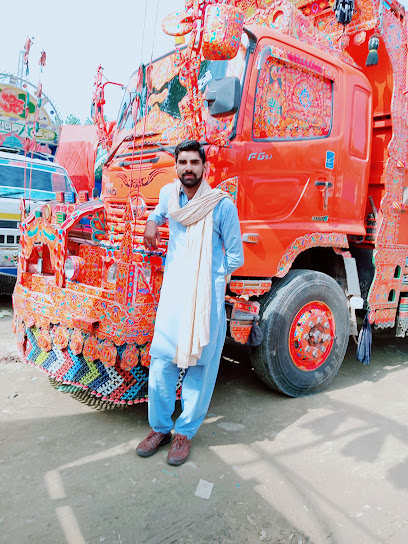
Holiday park restaurant
Experience the flavors of Swat Valley at Holiday Park Restaurant, where local cuisine meets stunning views in a cozy atmosphere.
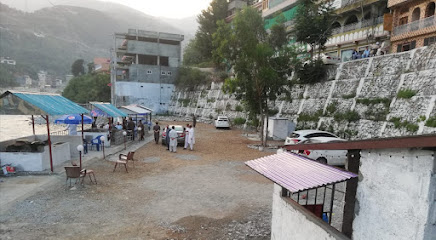
Hakim khan SUPER Store
Experience the warmth of Swat at Hakim Khan Super Store, where local culture meets refreshing drinks in a friendly atmosphere.

Local Phrases
-
- Helloسلام
[Salam] - Goodbyeخدا حافظ
[Khuda Hafiz] - Yesہاں
[Haan] - Noنہیں
[Nahi] - Please/You're welcomeمہربانی
[Mehrbani] - Thank youشکریہ
[Shukriya] - Excuse me/Sorryمعاف کریں
[Maaf Karein] - How are you?آپ کیسے ہیں؟
[Aap kaise hain?] - Fine. And you?ٹھیک ہوں۔ آپ؟
[Theek hoon. Aap?] - Do you speak English?کیا آپ انگریزی بولتے ہیں؟
[Kya aap angrezi boltay hain?] - I don't understandمجھے سمجھ نہیں آیا
[Mujhe samajh nahi aaya]
- Helloسلام
-
- I'd like to see the menu, pleaseبراہ کرم مینیو دکھائیں
[Barah karam menu dikhayen] - I don't eat meatمیں گوشت نہیں کھاتا
[Mein gosht nahi khaata] - Cheers!خوش رہیں!
[Khush rahen!] - I would like to pay, pleaseبراہ کرم ادا کریں
[Barah karam ada karein]
- I'd like to see the menu, pleaseبراہ کرم مینیو دکھائیں
-
- Help!مدد!
[Madad!] - Go away!چلے جاؤ!
[Chale jao!] - Call the Police!پولیس کو بلاؤ!
[Police ko bulao!] - Call a doctor!ڈاکٹر کو بلاؤ!
[Doctor ko bulao!] - I'm lostمیں گم ہو گیا ہوں
[Mein gum ho gaya hoon] - I'm illمیں بیمار ہوں
[Mein bimar hoon]
- Help!مدد!
-
- I'd like to buy...میں خریدنا چاہتا ہوں...
[Mein kharidna chahta hoon...] - I'm just lookingمیں صرف دیکھ رہا ہوں
[Mein sirf dekh raha hoon] - How much is it?یہ کتنا ہے؟
[Yeh kitna hai?] - That's too expensiveیہ بہت مہنگا ہے
[Yeh bohat mehnga hai] - Can you lower the price?کیا آپ قیمت کم کر سکتے ہیں؟
[Kya aap qeemat kam kar sakte hain?]
- I'd like to buy...میں خریدنا چاہتا ہوں...
-
- What time is it?وقت کیا ہوا ہے؟
[Waqt kya hua hai?] - It's one o'clockایک بجے ہیں
[Ek baje hain] - Half past (10)دس بج کر پندرہ منٹ ہو چکے ہیں
[Das baj kar pandra minute ho chuke hain] - Morningصبح
[Subah] - Afternoonدوپہر
[Dopahar] - Eveningشام
[Shaam] - Yesterdayکل
[Kal] - Todayآج
[Aaj] - Tomorrowکل
[Kal] - 1ایک
[Ek] - 2دو
[Do] - 3تین
[Teen] - 4چار
[Char] - 5پانچ
[Paanch] - 6چھ
[Chhe] - 7سات
[Saath] - 8آٹھ
[Aath] - 9نو
[No] - 10دس
[Das]
- What time is it?وقت کیا ہوا ہے؟
-
- Where's a/the...?یہاں ... کہاں ہے؟
[Yahan ... kahan hai?] - What's the address?پتہ کیا ہے؟
[Pata kya hai?] - Can you show me (on the map)?کیا آپ مجھے دکھا سکتے ہیں؟
[Kya aap mujhe dikhla sakte hain?] - When's the next (bus)?اگلی گاڑی کب ہے؟
[Agli gari kab hai?] - A ticket (to ....)ایک ٹکٹ (.... کے لیے)
[Ek ticket (... ke liye)]
- Where's a/the...?یہاں ... کہاں ہے؟
History of Swat
-
Swat's history stretches back to ancient times, with archaeological evidence suggesting human settlement as far back as 2000 BCE. The region was a crucial part of the Gandhara civilization, flourishing between the 6th century BCE and the 11th century CE. It was a major center for Buddhist learning and culture, evidenced by numerous stupas, monasteries, and sculptures discovered here.
-
In 327 BCE, Alexander the Great invaded the Indian subcontinent and crossed through Swat, then known as Udyana. The local tribes put up a fierce resistance, but Alexander's superior military tactics eventually subdued them. The influence of Hellenistic culture can still be traced in the artifacts found in the region.
-
During the reign of the Mauryan Empire under Emperor Ashoka in the 3rd century BCE, Buddhism gained significant traction in Swat. The region became a major center for Buddhist monasticism and scholarship. Many religious monuments, such as the Butkara Stupa, were built during this period, making Swat a pilgrimage site.
-
In the 10th and 11th centuries, Swat was invaded by the Ghaznavid and later the Ghurid dynasties. These invasions marked the decline of Buddhism in the region and the gradual rise of Islamic influence. The remnants of Buddhist culture, however, continued to affect the local traditions and architecture.
-
In the early 16th century, the Yusufzai Pashtuns migrated into Swat. This migration significantly altered the demographic and cultural landscape of the region. The Yusufzai established their own rule, which lasted for several centuries, and Swat became a semi-autonomous princely state.
-
In the early 20th century, the British recognized Swat as a princely state and formalized its governance under the Wali of Swat. The Wali, Miangul Abdul Wadud, initiated various modernization efforts, including the establishment of schools, hospitals, and infrastructure projects.
-
In 1969, Swat was integrated into Pakistan as part of the Malakand Division of Khyber Pakhtunkhwa province. The merger brought significant administrative and social changes, including the extension of Pakistani law and the development of modern educational and healthcare facilities.
-
Swat has undergone a cultural and economic revival in recent years, attracting tourists from around the world. The valley's scenic beauty, combined with its rich historical and cultural heritage, makes it a popular destination. Efforts to preserve ancient Buddhist sites and promote local arts and crafts have further enhanced its appeal.
Swat Essentials
-
Swat is located in the Khyber Pakhtunkhwa province of Pakistan. The nearest major airport is Bacha Khan International Airport in Peshawar, approximately 160 kilometers away. From Peshawar, you can take a taxi or a bus to reach Swat, with the journey typically taking around 4 to 5 hours. Alternatively, you can fly into Islamabad International Airport and take a bus or hire a private car to Swat, which takes around 5 to 6 hours by road.
-
Swat has a variety of transportation options including taxis, rickshaws, and local buses. Taxis are generally the most convenient option for tourists and can be hired for short trips within the city or for longer excursions. Rickshaws are a cheaper alternative for short distances. Public buses and vans are available and connect major towns within Swat, but they can be crowded and less comfortable. Renting a car with a driver is also a popular option for those looking to explore the region at their own pace.
-
The official currency in Pakistan is the Pakistani Rupee (PKR). Credit cards are accepted in some hotels, restaurants, and shops in larger towns like Mingora, but it is advisable to carry cash, especially when traveling to smaller villages and rural areas. ATMs are available in major towns, but it is wise to withdraw sufficient cash before heading into remote areas. Currency exchange services are available at banks and some hotels.
-
Swat is generally a safe destination, but like any travel destination, it is advisable to take standard precautions. Avoid walking alone at night in unfamiliar areas and keep an eye on your belongings in crowded places. Mingora is the largest town and has a relatively lower crime rate targeting tourists, but caution is always advisable. Be aware of local advice and any travel advisories before your trip.
-
In case of emergency, dial 1122 for immediate assistance. The local police station and medical facilities are available in Mingora. It is recommended to have travel insurance that covers medical emergencies. For minor health issues, there are pharmacies in the town where you can purchase over-the-counter medications. Contact your country's embassy or consulate for additional support if needed.
-
Fashion: Do dress modestly, especially when visiting religious sites. Avoid wearing revealing clothing. Religion: Do respect local customs and traditions. Always cover your head when entering mosques. Public Transport: Do be polite and respectful. Don’t eat or drink on public transport. Greetings: Do greet people with a handshake or a polite nod. Men should avoid shaking hands with women unless the woman extends her hand first. Eating & Drinking: Do try local delicacies and accept food offerings graciously. Don’t refuse hospitality, as it is considered impolite.
-
To experience Swat like a local, visit the local bazaars where you can buy traditional handicrafts and fresh produce. Engage with locals, as they are often friendly and willing to share stories about the region's history and culture. Don't miss visiting the ancient Buddhist ruins and the beautiful Swat Museum. For a unique experience, take a boat ride on the Swat River or hike the scenic trails in the nearby mountains.
Trending Landmark in Swat
-
Malam Jabba Ski Resort by Samsons Group
-
Fiza Gat Park
-
Marghazar White Palace
-
Mahodand Lake
-
Fizagat
-
Swat Museum
-
Madyan Bridge
-
Jarogo Waterfall Swat Valley | Visit Malam Jabba, Kalam Valley, Kumrat Valley | Swat Travel Guide
-
Sarfaraz khan
-
Butkara I
-
Ladies Park, Kanju Township
-
Ushu Forest
-
Kalam Glacier
-
Jaaz Banda
-
Badgoi Pass
Nearby Cities to Swat
-
Things To Do in Chitral
-
Things To Do in Kaghan
-
Things To Do in Naran
-
Things To Do in Abbottabad
-
Things To Do in Peshawar
-
Things To Do in Murree
-
Things To Do in Islamabad
-
Things To Do in Gilgit
-
Things To Do in Rawalpindi
-
Things To Do in Skardu
-
Things To Do in Kabul
-
Things To Do in Jammu
-
Things To Do in Sialkot
-
Things To Do in Gujranwala
-
Things To Do in Faisalabad













